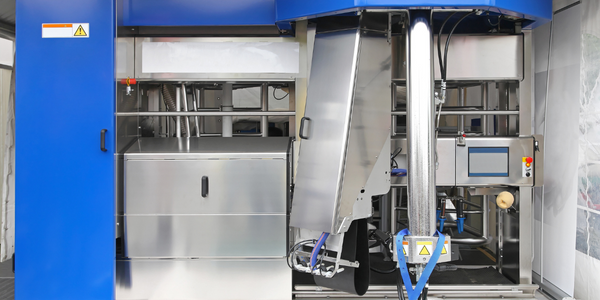Customer Company Size
Large Corporate
Region
- Europe
Country
- Germany
Product
- Camunda BPM
Tech Stack
- Java
- BPMN
Implementation Scale
- Enterprise-wide Deployment
Impact Metrics
- Productivity Improvements
- Cost Savings
Technology Category
- Application Infrastructure & Middleware - API Integration & Management
Applicable Functions
- Discrete Manufacturing
Use Cases
- Inventory Management
- Process Control & Optimization
Services
- System Integration
About The Customer
LVM Insurance is among the top 20 insurance groups in Germany and is one of the five largest car insurers in the country. The company's headquarters are located in Münster. In 2012, LVM Insurance launched two projects with Camunda BPM almost simultaneously. The first project, Service Order Management (SOM), dealt with internal administrative processes such as ordering hardware and software, relocating employees, etc. The second project, 'inventory management life', was concerned with the asynchronous processing and management of inventory. Underwriting processes and calculations were moved from the nightly batch to the asynchronous processing sequence initiated from the online application. Individual records were then processed in a timely manner in the Camunda Process Engine.
The Challenge
LVM Insurance, one of the leading insurance groups in Germany, was facing challenges in managing its internal administrative processes and inventory management. The company had two different systems for order and processing, which were operated in parallel with no integration interface except for the user. The data was transferred manually using copy/paste, and the process was not controlled but based on a central document accessible to all employees involved. The actual process was in the employees' minds, and everyone knew when it was their turn and what they had to do. In the 'inventory management life' project, parts of the existing life-contract system were replaced by a new development. Asynchronous single processing was used, which had already been proven successful in other sectors. However, a lightweight solution was needed to reduce complexity for both developers and operations.
The Solution
LVM Insurance decided to use Camunda BPM for both the SOM and 'inventory management life' projects. For the SOM project, they didn't want to rely on the previous BPMS due to high license costs. As the company was open-minded towards open source solutions, they tried a few open source process engines and got good responses soon. However, for enterprise use, they still had to implement a lot themselves. At this point, Camunda BPM stood out as particularly powerful. The decision to use the Camunda engine in the life project was heavily influenced by the initial experience in using the engine in the SOM project. The implementation was smooth as they only needed to know Java and BPMN, both of which they had enough expertise within the company.
Operational Impact
Quantitative Benefit

Case Study missing?
Start adding your own!
Register with your work email and create a new case study profile for your business.
Related Case Studies.

Case Study
System 800xA at Indian Cement Plants
Chettinad Cement recognized that further efficiencies could be achieved in its cement manufacturing process. It looked to investing in comprehensive operational and control technologies to manage and derive productivity and energy efficiency gains from the assets on Line 2, their second plant in India.

Case Study
Airbus Soars with Wearable Technology
Building an Airbus aircraft involves complex manufacturing processes consisting of thousands of moving parts. Speed and accuracy are critical to business and competitive advantage. Improvements in both would have high impact on Airbus’ bottom line. Airbus wanted to help operators reduce the complexity of assembling cabin seats and decrease the time required to complete this task.

Case Study
Hospital Inventory Management
The hospital supply chain team is responsible for ensuring that the right medical supplies are readily available to clinicians when and where needed, and to do so in the most efficient manner possible. However, many of the systems and processes in use at the cancer center for supply chain management were not best suited to support these goals. Barcoding technology, a commonly used method for inventory management of medical supplies, is labor intensive, time consuming, does not provide real-time visibility into inventory levels and can be prone to error. Consequently, the lack of accurate and real-time visibility into inventory levels across multiple supply rooms in multiple hospital facilities creates additional inefficiency in the system causing over-ordering, hoarding, and wasted supplies. Other sources of waste and cost were also identified as candidates for improvement. Existing systems and processes did not provide adequate security for high-cost inventory within the hospital, which was another driver of cost. A lack of visibility into expiration dates for supplies resulted in supplies being wasted due to past expiry dates. Storage of supplies was also a key consideration given the location of the cancer center’s facilities in a dense urban setting, where space is always at a premium. In order to address the challenges outlined above, the hospital sought a solution that would provide real-time inventory information with high levels of accuracy, reduce the level of manual effort required and enable data driven decision making to ensure that the right supplies were readily available to clinicians in the right location at the right time.










